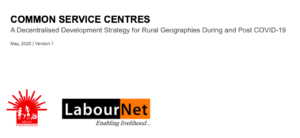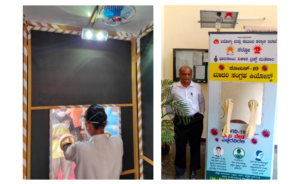Oxygen Concentrators
The ability to boost capacity to deliver oxygen therapy is the cornerstone of the overall approach to managing the COVID- 19 outbreak and it has implications for the functioning of the entiresystem. The principles, set out here, of building surge capacity should be integrated into a health system’s readiness and response capacities for all functions – either centrally, or at facility level.
Oxygen supply and delivery systems are limited in many resource-limited settings. Each supply option needs to be examined with attention to access and distribution.
The document showcases the need to account for energy efficiency and improved consumption when planning for oxygen requirements at a facility. It also showcases technical design for solar energy systems to ensure availability of reliable
and sustainable energy at the health facility.
Solar-Powered Ventilators
Due to rapid increasing number of COVID 19 cases, there is growing demand health facilities like isolation wards and ICU. Developed countries like US. ITALY and Spain where there are improved health systems also facing severing challenges in the treatment and management of COVID 19 cases. In the context of resource constraint countries where there are crippled health care systems it will be even pose if there is sudden rise of COVID infections and it will pose greater challenge if there is community transmission. Expert says in India if COVID 10 cases surges ahead we struggle because close to 3% of these cases would require ventilators. As per brookings report, the country might need anywhere between 1.10 to 2.2 lakh ventilators by mid of May in the worst-case scenario. The number of ventilators available in the country is a maximum of 57000. Most of those ventilators cannot be put in use.
Sustainable Energy driven and Climate Responsive Infrastructure for Isolation & Therapeutic Units for COVID-19
The present crisis of COVID-19 is no different, but just that it has happened extremely suddenly and has impacted all parts of the society at once. Again, the biggest victims of this ongoing crisis will be the poor. SELCO’s again believes the eco-system approach will help come up with appropriate solutions to the problems being created by COVID-19.
COVID-19 crisis has provided an opportunity to prove that sustainable energy, appropriate building design, utilization of sustainable materials for construction and efficiency of medical equipments are all critical components for delivering emergency services. SELCO has worked with stakeholders to consider both the above criterion and have created a blueprint for the 1st set of interventions.
The added advantage being these components and interventions can be used even after the crisis is over, thus making it economically sustainable for governments to invest in them.





